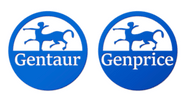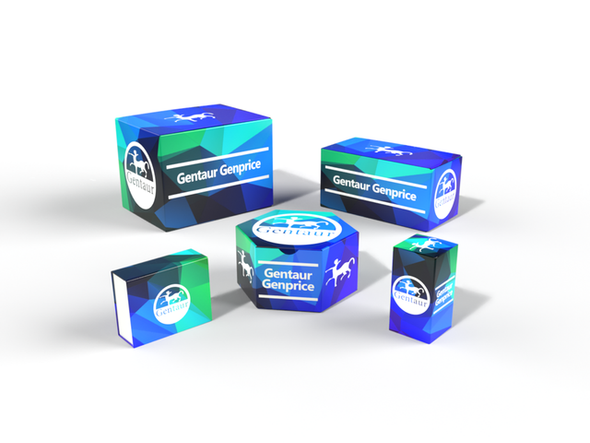BW
Gα t1 (M104) polyclonal Antibody | BS3311
- SKU:
- BW-BS3311
- Availability:
- Usually ships in 5 working days
Description
Gα t1 (M104) polyclonal Antibody | BS3311 | Gentaur UK, US & Europe Distribution
Host: Rabbit
Reactivity: Human,Mouse,Rat
Application: WB
Application Range: WB: 1:500~1:1000
Background: Heterotrimeric G proteins function to relay information from cell surface receptors to intracellular effectors. Each of a very broad range of receptors specifically detects an extracellular stimulus (a photon, pheromone, odorant, hormone or neurotransmitter) while the effectors (i.e. adenyl cyclase), which act to generate one or more intracellular messengers, are less numerous. In mammals, G protein α, β and γ polypeptides are encoded by at least 16, 4 and 7 genes, respectively. Most interest in G proteins has been focused on their α subunits, since these proteins bind and hydrolyze GTP and most obviously regulate the activity of the best studied effectors. Four distinct classes of Gα subunits have been identified; these include Gs, Gi, Gq and Gα 12/13. The Gi class comprises all the known α subunits that are susceptible to pertussis toxin modifications, including Gα i-1, Gα i-2, Gα i-3, Gα o, Gα t1, Gα t2, Gα z and Gα gust. In the well characterized visual system, photorhodopsin catalyzes the exchange of guanine nucleotides bound to the visual transducin Gα subunits (Gα t1 in rod cells and Gα t2 in cone cells) .
Storage & Stability: Store at 4°C short term. Aliquot and store at -20°C long term. Avoid freeze-thaw cycles.
Specificity: Gα t1 (M104) polyclonal Antibody detects endogenous levels of Gα t1 protein.
Molecular Weight: ~ 40 kDa
Note: For research use only, not for use in diagnostic procedure.
Alternative Names: Guanine nucleotide-binding protein G (t) subunit alpha-1; Transducin alpha-1 chain; GNAT1; GNATR; Transducin α-1; Transducin α1; Gαt1; Gα-t1
Immunogen: Synthetic peptide, corresponding to amino acids 71-120 of Human Gα t1.
Conjugate: Unconjugated
Modification: Unmodification
Purification & Purity: The Antibody was affinity-purified from rabbit antiserum by affinity-chromatography using epitope-specific immunogen and the purity is > 95% (by SDS-PAGE) .
Pathway:










